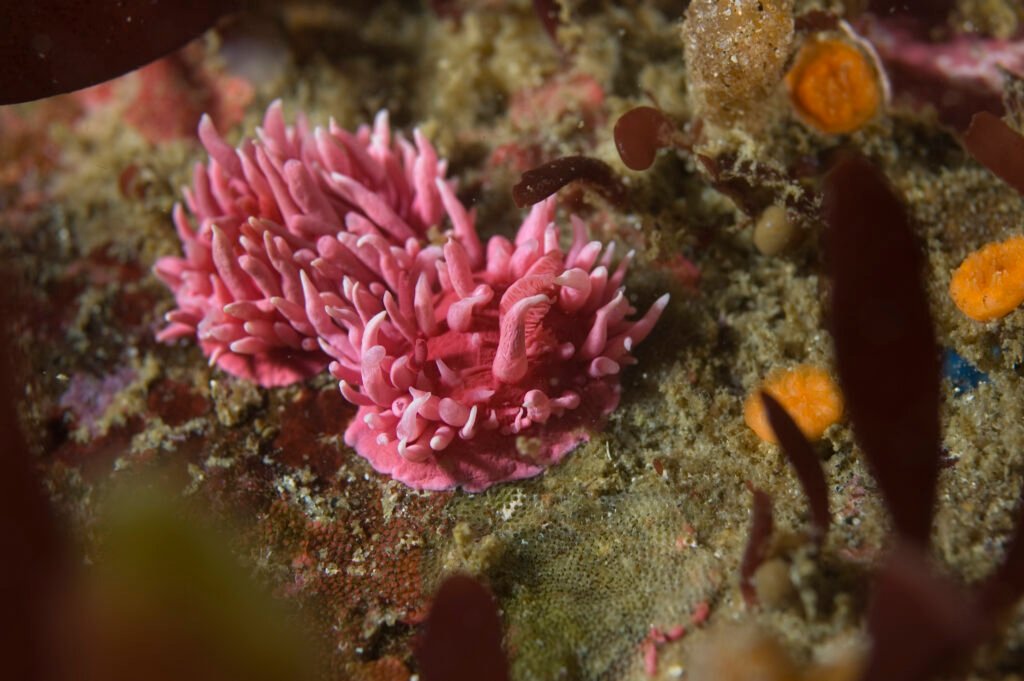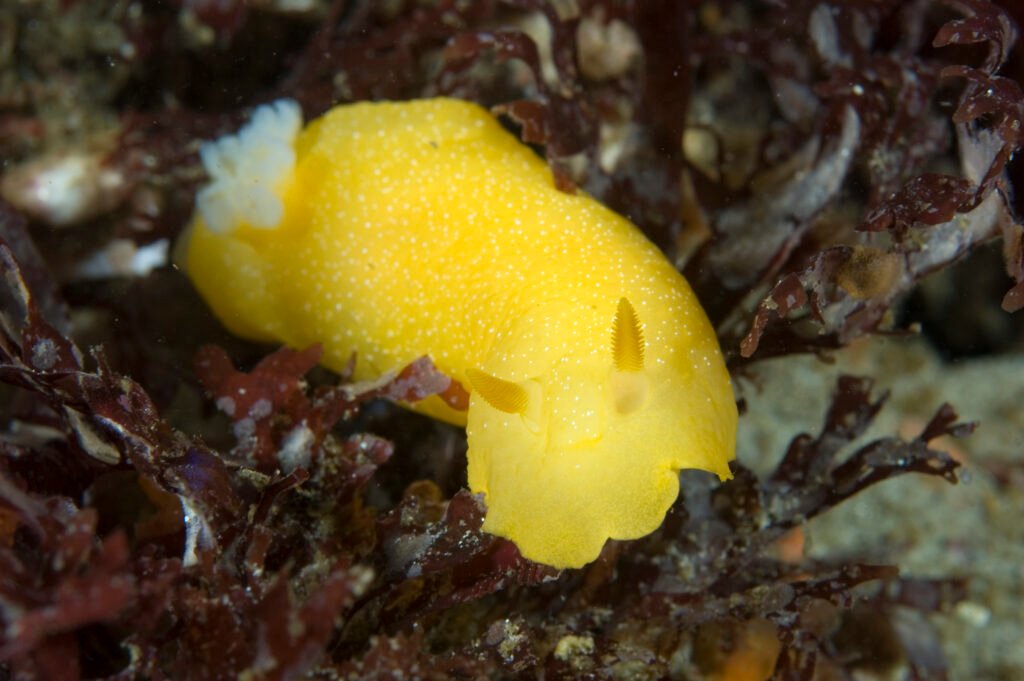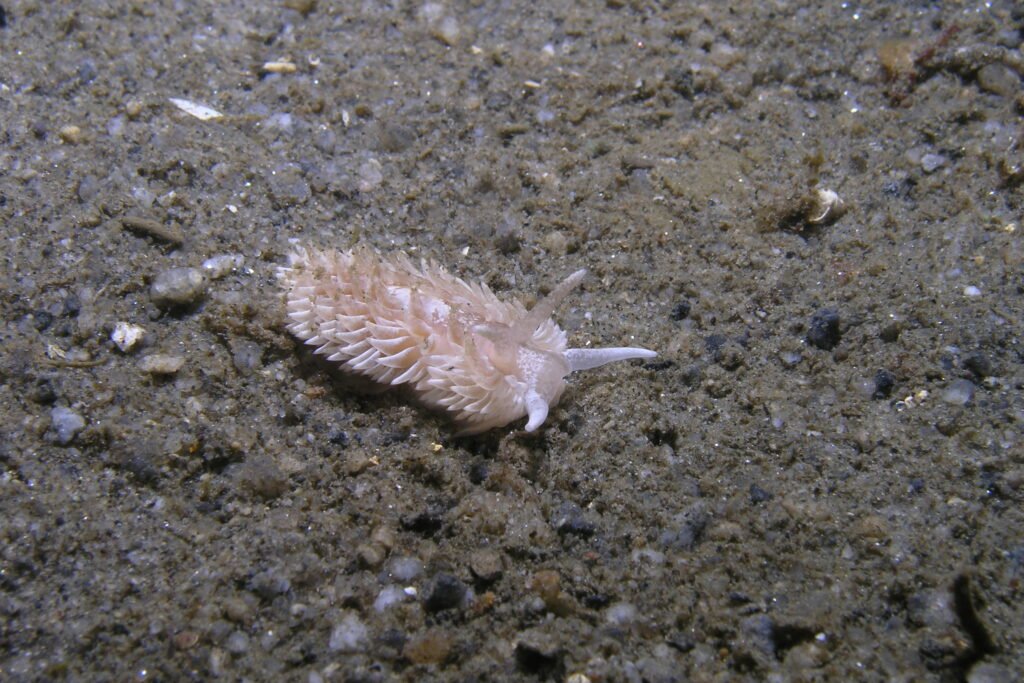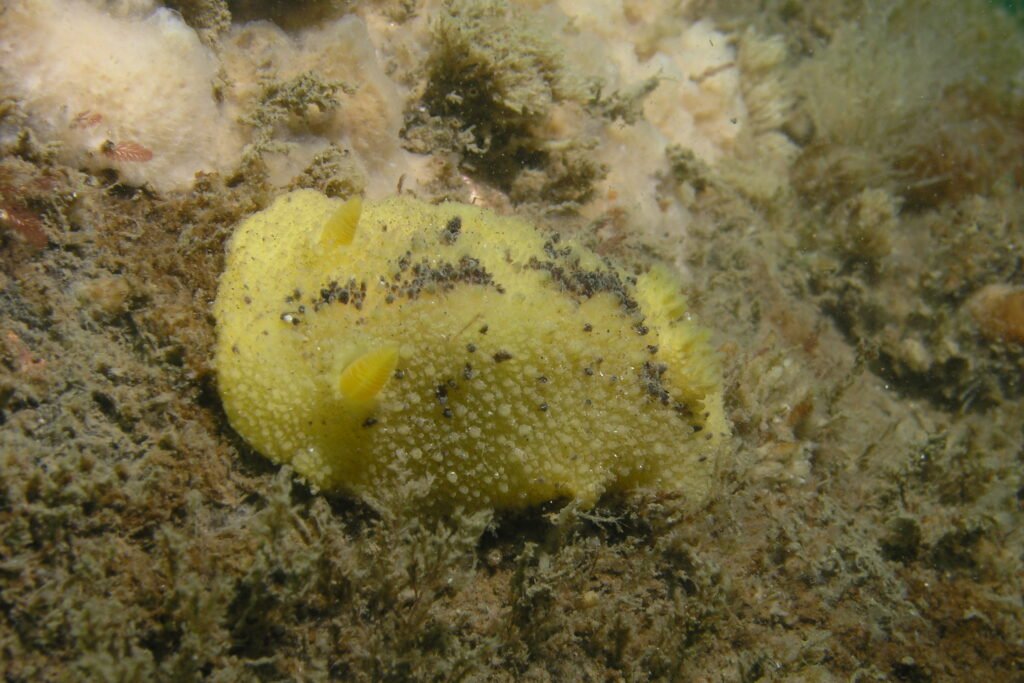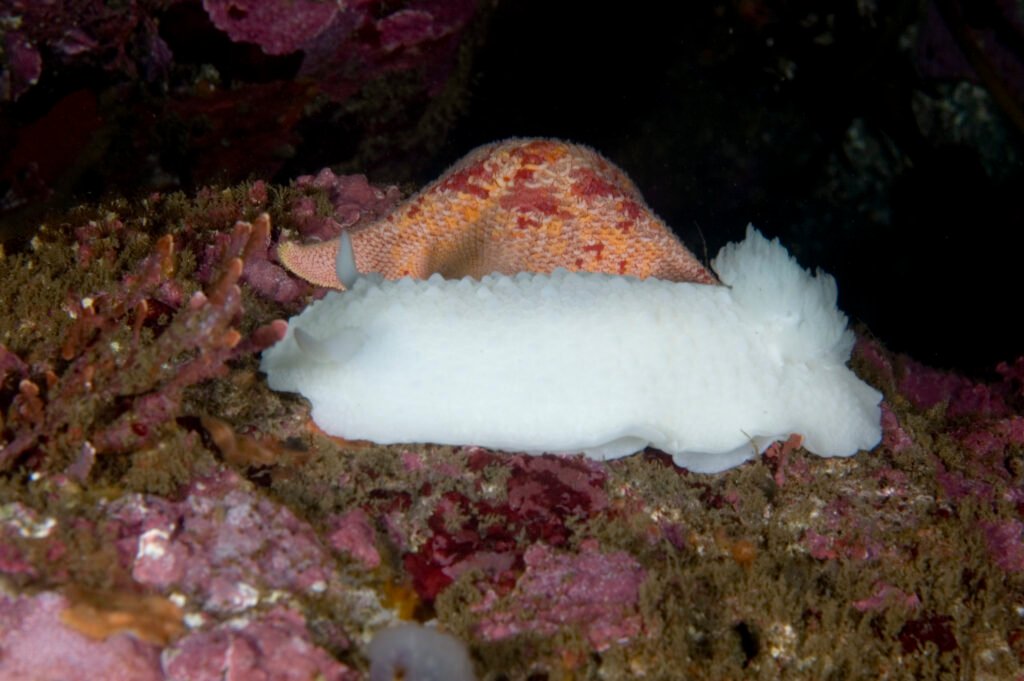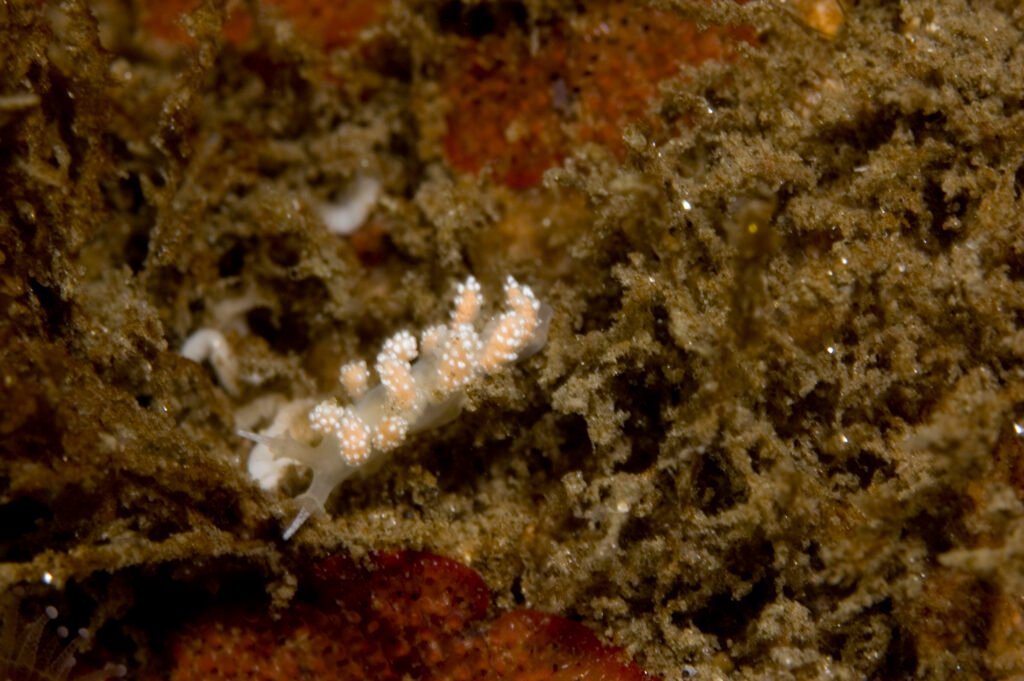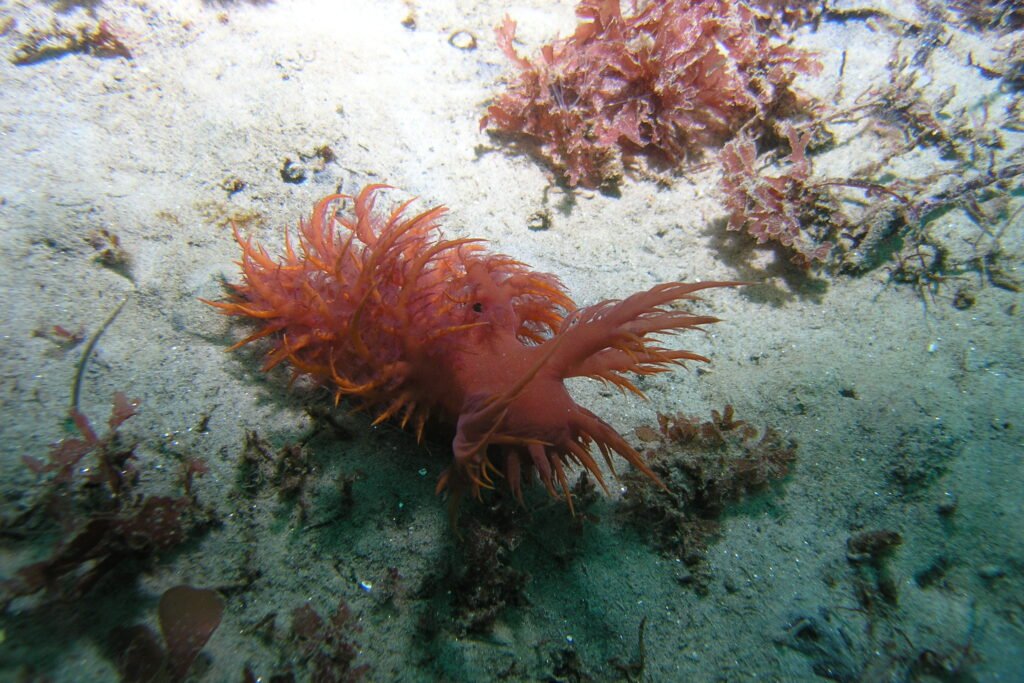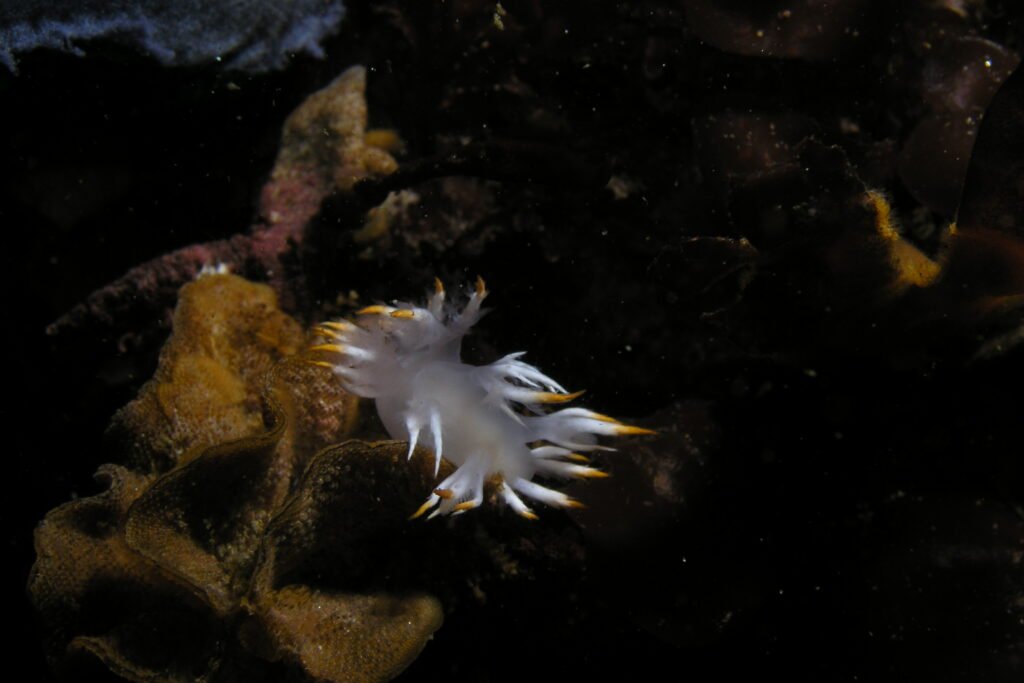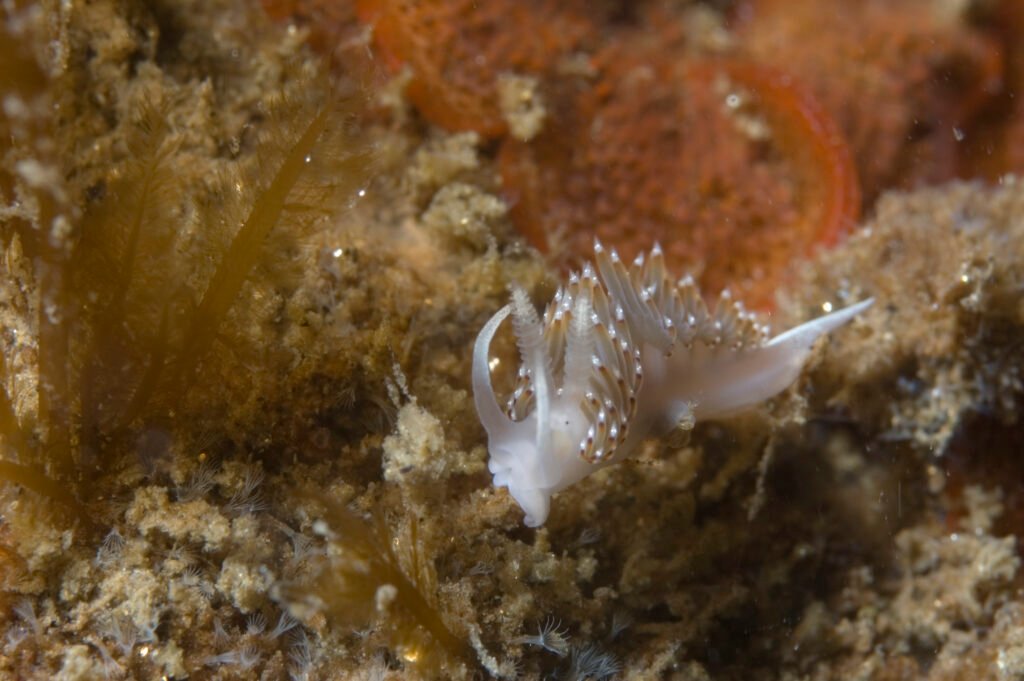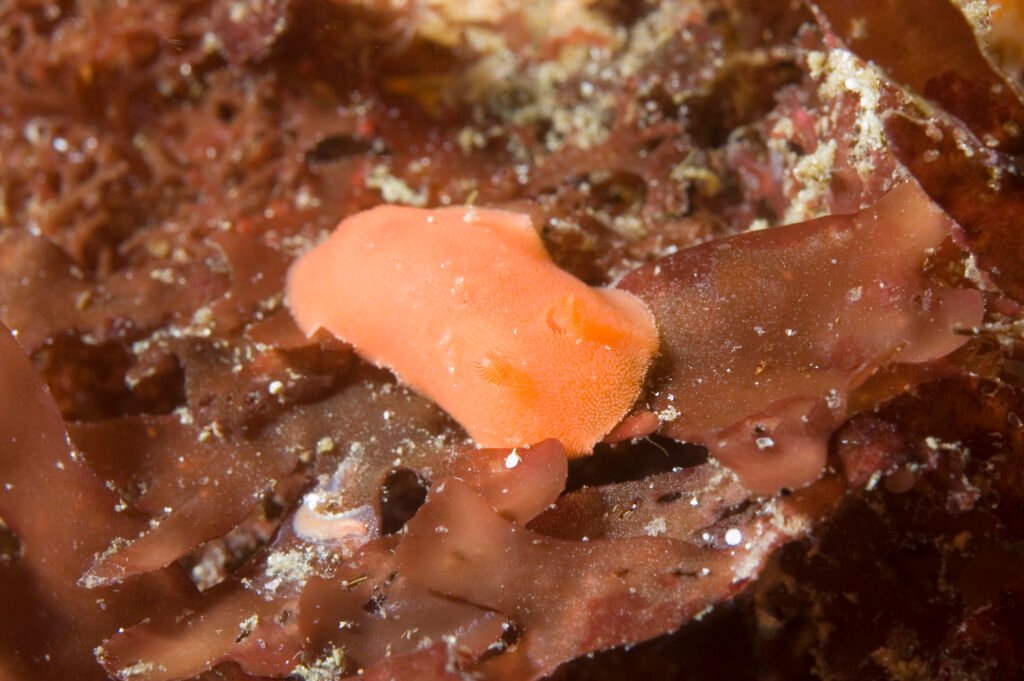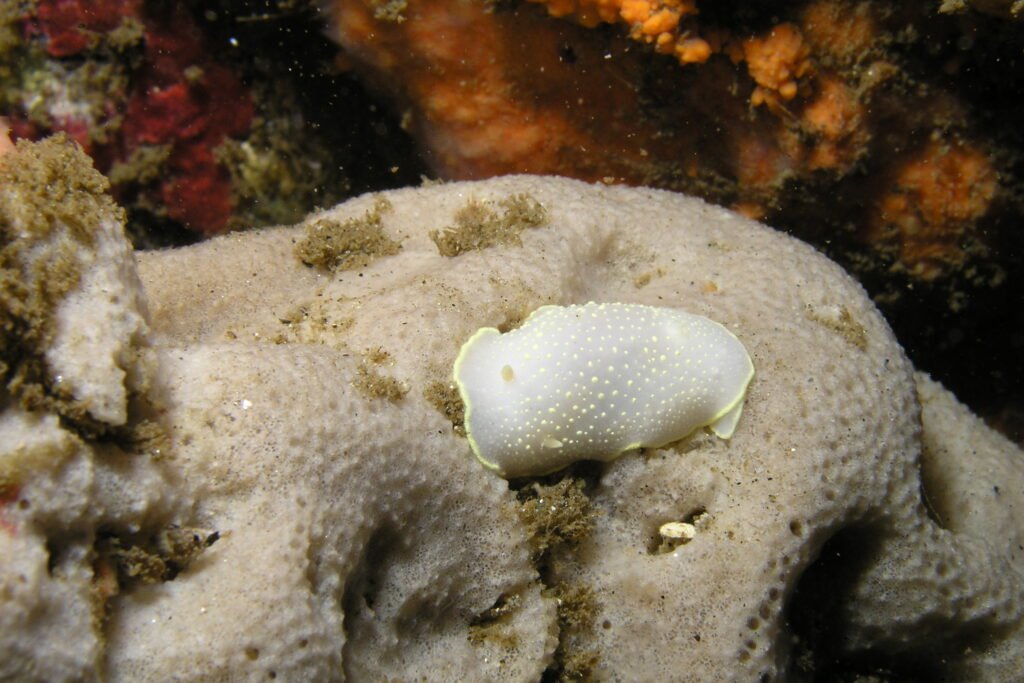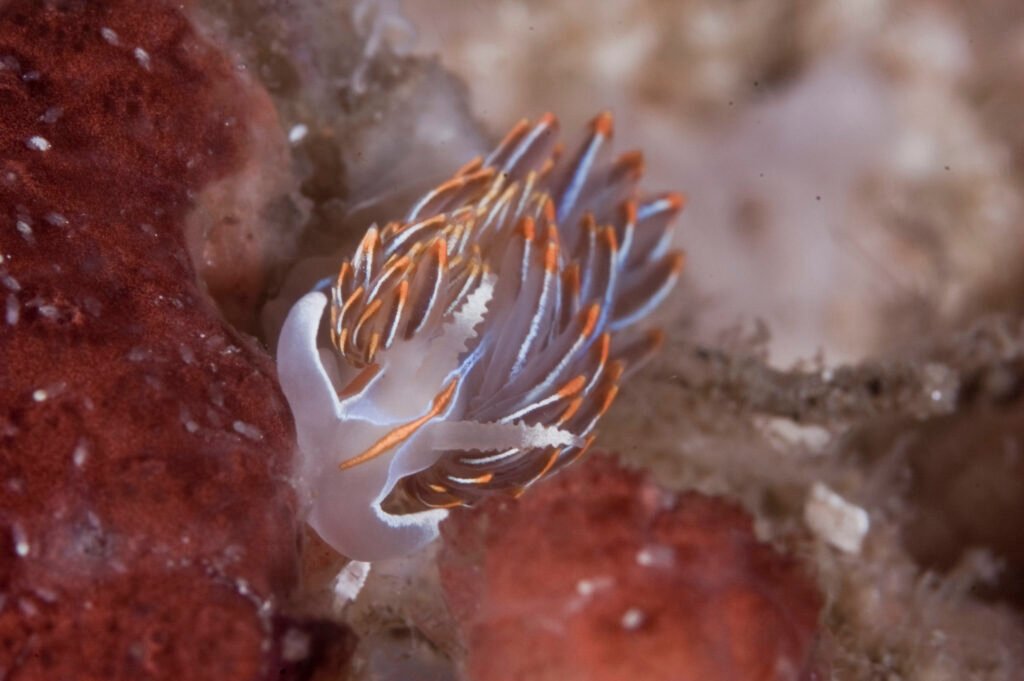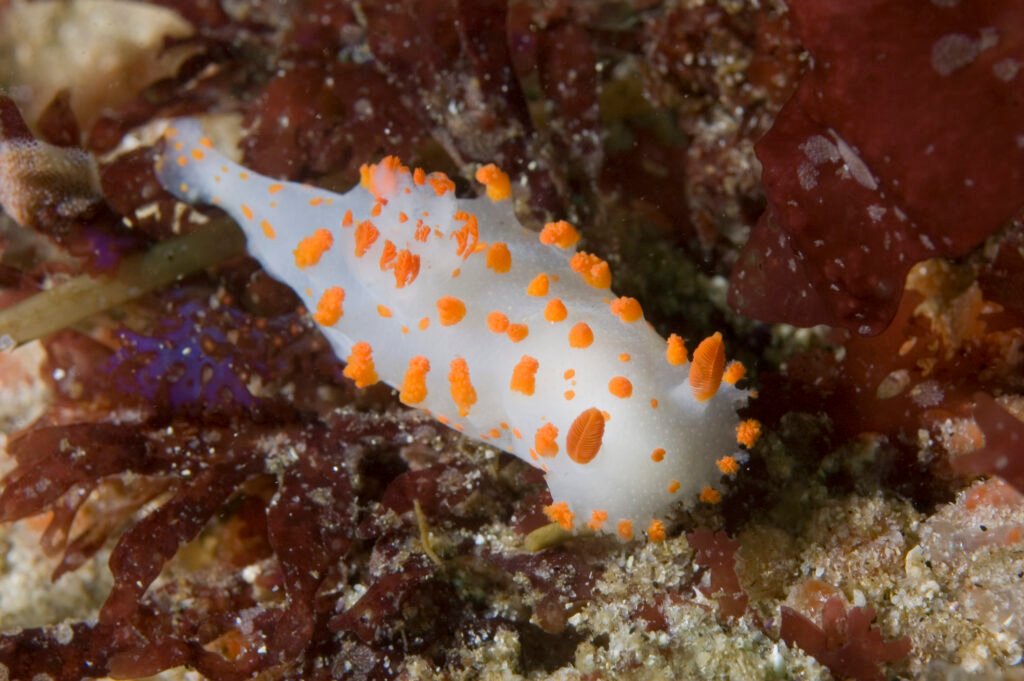Physical Description
Hopkins’ Rose, typically measuring around 20mm in length but occasionally reaching up to 30mm, exhibits a distinctive rose-pink hue throughout its body. Its dorsal processes, often in a lighter shade of the same color, densely cover the dorsum, appearing as very long and gently tapered structures. Rhinophores boast 18-24 lamellae and are rose-pink on the shaft, with a slightly darker pink clavus. Additionally, the species features 7-14 unipinnate branchial plumes in a dark rose-pink shade, while its labial tentacles contribute to forming an oral veil.
Habitat and Geographical Range
Hopkins’ Rose inhabits the eastern Pacific coast, where it can be found in suitable marine environments. Its precise geographical range may vary within this region.
What They Eat and How They Breed
As with other nudibranchs, Hopkins’ Rose likely feeds on various marine organisms, potentially including small invertebrates or algae. Regarding reproduction, it is likely that individuals engage in mating behavior, exchanging sperm. Females then lay eggs, which are typically deposited in gelatinous masses on appropriate substrates. Upon hatching, the larvae undergo a pelagic stage before settling on the ocean floor.
